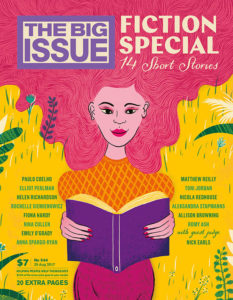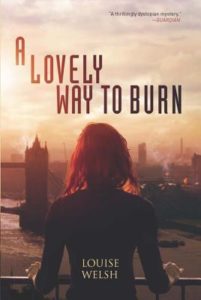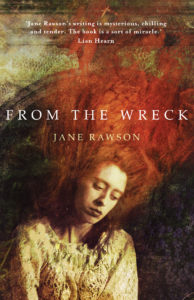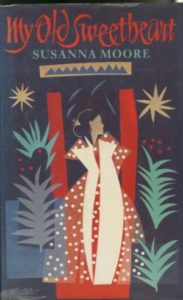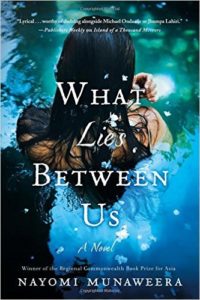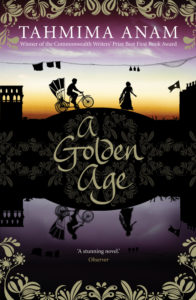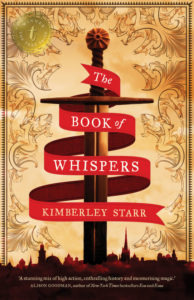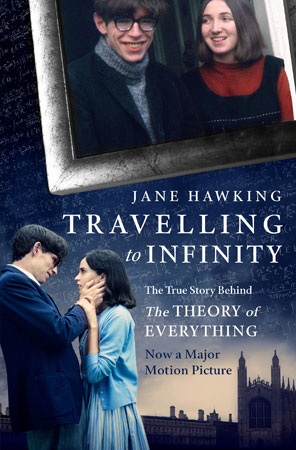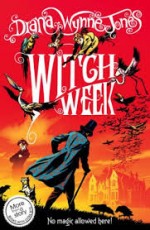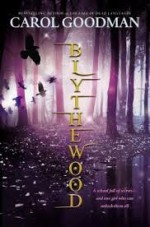 This book, a history of the Salem witch trials is the darling of the critics, and the dud of the reader. “J K Rowling meets Antony Beevor, Stephen King and Marina Warner” says The Times quote on the cover. ‘Schiff’s writing is to die for’ it effuses. Um, no. Schiff has taken a fascinating, utterly compelling subject and sucked the life out of it to leave a dried husk. Her convoluted, tortured sentences while perhaps, elegant, inventive and even witty on their own, when compiled one upon the other just serve to obfuscate an already extremely complicated and detailed account. No one can fault Schiff for her research: it is meticulous and wide-ranging. As well as getting the actual events of the accusations and trial, we get an account of the colony of New England, the land disputes and administration of Salem and surrounds; the family backgrounds and histories of the ministers, the judges, the governors, the scribe for the trials etc. etc. To complicate matters further, these accounts often form lengthy diversions interspersed through the narrative dragging the reader down intricate, detailed and boring rabbit holes. One wonders if the critics actually read the book they reviewed.
This book, a history of the Salem witch trials is the darling of the critics, and the dud of the reader. “J K Rowling meets Antony Beevor, Stephen King and Marina Warner” says The Times quote on the cover. ‘Schiff’s writing is to die for’ it effuses. Um, no. Schiff has taken a fascinating, utterly compelling subject and sucked the life out of it to leave a dried husk. Her convoluted, tortured sentences while perhaps, elegant, inventive and even witty on their own, when compiled one upon the other just serve to obfuscate an already extremely complicated and detailed account. No one can fault Schiff for her research: it is meticulous and wide-ranging. As well as getting the actual events of the accusations and trial, we get an account of the colony of New England, the land disputes and administration of Salem and surrounds; the family backgrounds and histories of the ministers, the judges, the governors, the scribe for the trials etc. etc. To complicate matters further, these accounts often form lengthy diversions interspersed through the narrative dragging the reader down intricate, detailed and boring rabbit holes. One wonders if the critics actually read the book they reviewed.
To be fair to Schiff, the lumpiness of the book is probably due to the type of documentary evidence available – we have the court records (though these are not complete and are often filtered through the opinion of the recorder), land dispute records, and histories of the officials (all men). There is a big gap in that there is little known about the teenage accusers (all female), and what is known is eked out by Schiff so that her take on the genuineness, or otherwise, of the girls is only revealed towards the very end of this lengthy account. Often the girls are described as though they are one shrieking, contorting entity.
I started out reading this book so angry and exasperated by what happened to the initial witches who were hanged – one was a beggar woman, and another sharp-tongued and opinionated: the type of women outsiders who fitted the medieval witch type a neighbour might accuse, but another, Rebecca Nurse, was a kind 71 year old church goer. Schiff goes to great length to establish that there were tribal enmities at work in the community in the form of lengthy land and inheritance disputes, and that this may be part of why some people (women and men) were accused, and how other people could be easily found to also testify against them. The Nurse clan did all they could to save Rebecca (such as getting up a petition), but to no avail.
At the beginning of the book it seemed incredible that the word of the accused girls could have been taken at face value. It all started with two young girls, ten and eleven, the daughter and niece of the local minister writhing and screaming, and saying they were being tormented. In the late 17th century, mishaps and misfortune was often attributed to witchcraft, and the church, including the puritan church, accepted the reality of the devil and demons. This meant the minister spent time at their bedsides praying and trying to work out who was bewitching them. The minister’s Indian servant, Tituba, was only too willing to interpret the girls’ visions. Schiff describes her as a ‘a brilliant raconteur’, her testimony ‘a hypnotic performance’ – her fulsome description of witches’ activities and rites set the scene for the accusations and confessions to follow. Schiff writes: “It was as if Tituba had handed out hallucinogens. The terrifying, psychedelic confession, rather than the voodoo of legend, was her contribution to the events of 1692.”
As the narrative progresses (as we begin to understand that leading questions are allowed in the court, that the gang of girls and young women accusers are able to writhe and shriek in court and say they are pricked and punched, they can fall to the floor when an accused looks at them, and to cry out that they see witches and their familiars – invisible to all except them – sitting on the rafters: all without being questioned themselves) you know that there is not going to be any common sense, compassion or fairness in the trials. One thing that riled me was the so-called ‘touch test’. The idea was that if one of the afflicted girls was touched by the witch, their symptoms would cease because the ‘power’ was reabsorbed back into the witch. Of course this test could be easily verified by blindfolding the girl and having a few different people touch her to see if only the touch of the accused worked but, no, they didn’t blindfold her, they blindfolded the accused!
The other truly exasperating thing, is that the court was run by educated men, and at this time it meant educated at Harvard. It was never really explained how such men closed their ears to any dissenting voices – they were forever sending letters to senior churchmen in Boston or New York senior asking for their advice on the matter, and then ignoring the advice. For example, they were warned not to rely on ‘spectral’ evidence alone – this is the visions of invisible witches, their familiars, accounts of being asked to sign the devil’s book etc. – yet often evidence used to convict was of this sort. The ridiculous touch test was supposed to be true evidence, and so was used extensively.
But all my outrage at the goings on was suffocated by the detail and diversions, and oblique writing of Schiff – you can’t continue to be angry when you are ploughing through convoluted prose trying to work out what the hell is going on. I also thought the throw away ‘wit’ of Schiff, her tongue-in-cheek jokes, ironic remarks etc., deflated the true horror of what I was reading. Perhaps this was intentional – a way for Schiff to deal with something so confronting and frustrating, and for the reader to deal with it too. It may also be used as a way of hinting her position while maintaining a seemingly objective stance.
“Villages scratched their heads over enchanted fireplaces, ambulatory trees, and misplaced saucers but were more circumspect about those oddities, participating in another New England specialty: that of leaving things unsaid. After the acoustical runaway of the witchcraft crisis – the voices rising to a fever pitch – 1692 left in its wake a thundering reticence.”
As hinted here, there is little satisfaction to be had at the end of the book. Schiff does give some explanation but it is too little, too late. What she does achieve is to throw the reader into a maelstrom of detail to show that there is no easy explanation – there are one or two unreconstructed villains but she presents most participants as honestly trying to deal with an inexplicable problem: the seeming outbreak of the devil’s work in New England. Most people involved, including the accused as well as the accusers, the clergy and the authorities, did believe in witchcraft. At the height of the scare, hundreds of people were accused and arrested.
It is understandable that once the first cohort had been hanged proclaiming their innocence, that the judges could not admit they were wrong, and so were obliged to go on finding guilt, and signing execution orders. It is understandable that the accusers might be hysterics and truly afflicted by pain and visions – the very constricted lives of women and girls at the time contributing to this. It is understandable that people were afraid and lashed out, and that they accused others first for fear of being accused themselves later. SPOILER ALERT But other things are unforgiveable: the torturing of teenage boys into accusing their mother and others, the pressing to death of seventy-year-old man who would not confess, dragging a woman from her sickbed into a cold, crowded, lice-filled gaol where she died; women left to give birth on the gaol floor; the manacling of a five-year-old accused girl, who saw her baby sister die in front of her, and whose mother was hanged (when this orphan was finally released after eight months she was insane and would remain so for the rest of her life); the corrupt appropriation of the property of the accused etc. etc. There was no redress for these many crimes and there were only a few confessions by those involved that they had put innocents to death. Only one of the accuser girls later admitted to fabrication; she had to do this to be allowed back into the congregation. It is interesting that, although this issue of fabricating the whole thing is pivotal to a modern understanding of the trials, it didn’t appear to be the crux of the matter for the people of the day. Except for the one confessor, none of the other girls were held to account: they grew up and led ordinary lives, apparently.
All in all, “The Witches”, is a frustrating read. I would have dearly loved Schiff to be a more straightforward writer, her literary hijinks just complicated things for me. I do admire her, though, for making me see things through the eyes of people living in another time and place, however uncomfortable that process was.
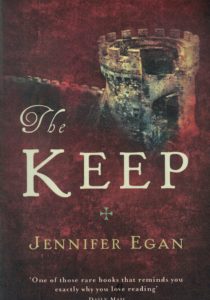 I haven’t read Egan’s award-winning ‘A Visit From the Goon Squad’ (2010) but ‘The Keep’ (2006) appears to be a precursor re her interest in metafiction, the use of intertextual devices etc. The ‘hero’ here is Danny, a New York dude who arrives in an unnamed Eastern European town because a childhood friend, Howard, sent him a free airfare and he had to get out of New York for crossing some underworld types. Danny strikes out at night to find the castle that Howard is renovating, intending to turn it into a hotel. There is no light, strange undergrowth and an impenetrable wall. Danny is dragging a portable satellite dish with him because he can’t stand to be out of touch with his NY friends. Funny how this plot device is redundant now, just ten years later, such is the perils of the speed of modern technology for writers.
I haven’t read Egan’s award-winning ‘A Visit From the Goon Squad’ (2010) but ‘The Keep’ (2006) appears to be a precursor re her interest in metafiction, the use of intertextual devices etc. The ‘hero’ here is Danny, a New York dude who arrives in an unnamed Eastern European town because a childhood friend, Howard, sent him a free airfare and he had to get out of New York for crossing some underworld types. Danny strikes out at night to find the castle that Howard is renovating, intending to turn it into a hotel. There is no light, strange undergrowth and an impenetrable wall. Danny is dragging a portable satellite dish with him because he can’t stand to be out of touch with his NY friends. Funny how this plot device is redundant now, just ten years later, such is the perils of the speed of modern technology for writers.

